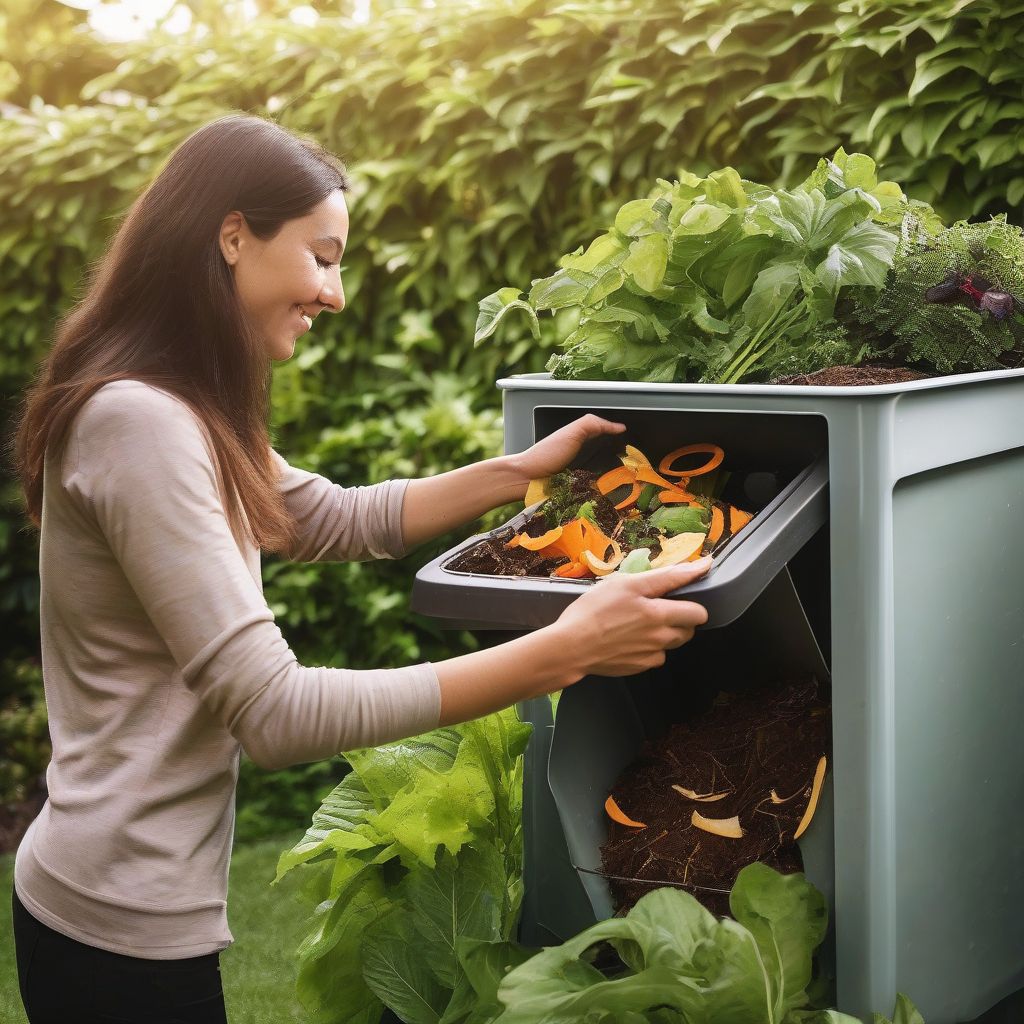Have you ever dreamed of a thriving garden bursting with vibrant vegetables and fragrant herbs? A key ingredient to achieving this gardener’s paradise is nutrient-rich soil, and one of the easiest and most sustainable ways to enrich your soil is by composting kitchen scraps. Composting not only reduces household waste but also creates a valuable amendment that improves soil structure, water retention, and provides essential nutrients for healthy plant growth. This guide will provide you with a comprehensive understanding of how to compost kitchen scraps effectively, turning your food waste into “black gold” for your garden.
Understanding the Basics of Composting Kitchen Scraps
Composting is the natural process of decomposition of organic matter by microorganisms, such as bacteria and fungi, in the presence of oxygen. These tiny workers break down kitchen scraps into a dark, crumbly substance called compost, which is rich in nutrients and beneficial microbes.
What Kitchen Scraps Can Be Composted?
A wide variety of kitchen scraps can be composted, including:
- Fruit and vegetable scraps: Peels, cores, rinds, overripe produce.
- Coffee grounds and filters: A great source of nitrogen.
- Tea bags: Remove staples before composting.
- Eggshells: Crushed eggshells add calcium to your compost.
- Yard waste: Grass clippings, leaves, twigs (shredded for faster decomposition).
What to Avoid Composting:
While composting is versatile, some items should be avoided:
- Meat, bones, and fish: These attract pests and can create unpleasant odors.
- Dairy products: Also attract pests and decompose slowly.
- Oils and fats: Can slow down the composting process.
- Diseased plants: Can contaminate your compost pile.
- Treated wood or sawdust: May contain harmful chemicals.
Choosing a Composting Method
Several composting methods are suitable for kitchen scraps. Choosing the right one depends on your space, time commitment, and budget.
Bin Composting:
Bin composting is a popular method for backyard composting. You can purchase a ready-made compost bin or build your own. This method provides a contained environment for decomposition and is relatively easy to manage.
Worm Composting (Vermicomposting):
Worm composting utilizes red wiggler worms to break down kitchen scraps. This method is ideal for smaller spaces and produces nutrient-rich worm castings, a valuable fertilizer.
Bokashi Composting:
Bokashi composting involves fermenting kitchen scraps with beneficial microorganisms. This method can handle a wider range of food waste, including meat and dairy, and is a good option for indoor composting.
 Composting Kitchen Scraps for Healthy Soil
Composting Kitchen Scraps for Healthy Soil
Building Your Compost Pile
Creating a healthy compost pile requires the right balance of “greens” (nitrogen-rich materials) and “browns” (carbon-rich materials).
Greens:
Greens provide nitrogen, which fuels the decomposition process. Examples include:
- Grass clippings
- Coffee grounds
- Vegetable scraps
- Fruit scraps
Browns:
Browns provide carbon, which provides energy and structure to the compost pile. Examples include:
- Dry leaves
- Shredded paper
- Cardboard
- Sawdust
A good ratio of greens to browns is approximately 1:2 or 1:3. Layering your greens and browns like a lasagna helps create air pockets, promoting aerobic decomposition.
Maintaining Your Compost Pile
Regular maintenance ensures efficient composting and prevents unpleasant odors.
Turning the Pile:
Turning the compost pile every few weeks helps aerate it and speeds up decomposition. This also helps distribute moisture and temperature evenly.
Moisture Control:
The compost pile should be as moist as a wrung-out sponge. If it’s too dry, add water. If it’s too wet, add more brown materials.
Monitoring Temperature:
A healthy compost pile will heat up as the microorganisms break down organic matter. Monitoring the temperature can help you gauge the progress of decomposition.
Troubleshooting Common Composting Problems
While composting is generally straightforward, some challenges may arise.
Foul Odors:
Foul odors can indicate anaerobic decomposition (decomposition without oxygen). Turning the pile more frequently and adding more brown materials can help.
Pests:
Fruit flies and other pests can be attracted to compost piles. Covering food scraps with a layer of brown material can help deter them.
Slow Decomposition:
If your compost pile is decomposing slowly, it may be due to a lack of nitrogen, insufficient moisture, or inadequate aeration. Adjusting these factors can help speed up the process.
Harvesting and Using Your Compost
Once your compost has turned into a dark, crumbly substance with an earthy smell, it’s ready to be harvested. Sift out any large, undecomposed pieces and add them back to the compost pile.
Compost can be used in various ways to improve your garden soil:
- Topdressing: Spread a layer of compost over the soil surface.
- Mixing with soil: Incorporate compost into the soil before planting.
- Making compost tea: Steep compost in water to create a liquid fertilizer.
Composting kitchen scraps is a rewarding practice that benefits both the environment and your garden. By following these guidelines, you can transform your food waste into a valuable resource for healthy soil and thriving plants. Remember to research local resources and regulations regarding composting, and don’t be afraid to experiment to find the method that works best for you. As a nutritionist and meal prep coach, I understand the importance of sustainability and healthy eating. Composting allows you to connect with the entire food cycle, from the kitchen to the garden and back to your table.
“Let food be thy medicine and medicine be thy food,” wisely stated Hippocrates, emphasizing the intrinsic connection between what we consume and our overall well-being. Composting fosters this holistic approach by returning essential nutrients back to the soil, enriching the food we grow and ultimately nourishing our bodies.
Encourage your family and friends to join the composting movement! Share this article and leave a comment below with your composting tips and experiences. We can all contribute to a healthier planet, one kitchen scrap at a time.



